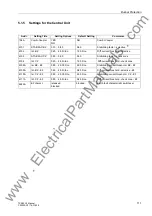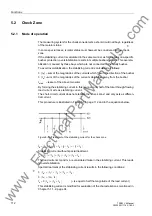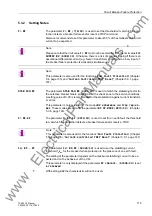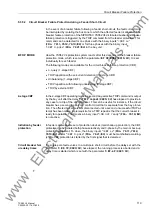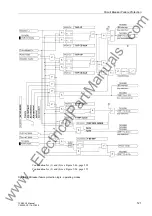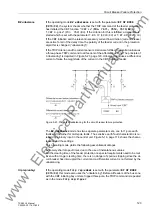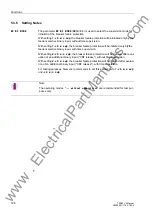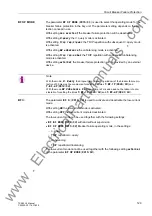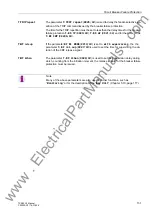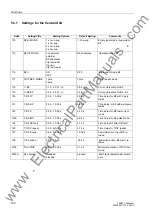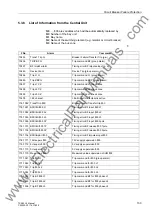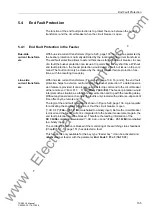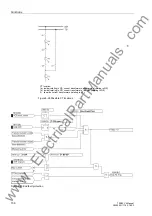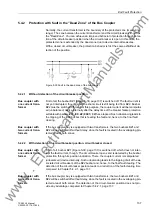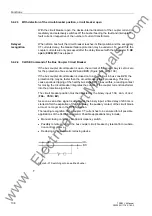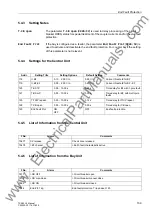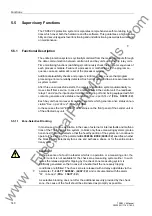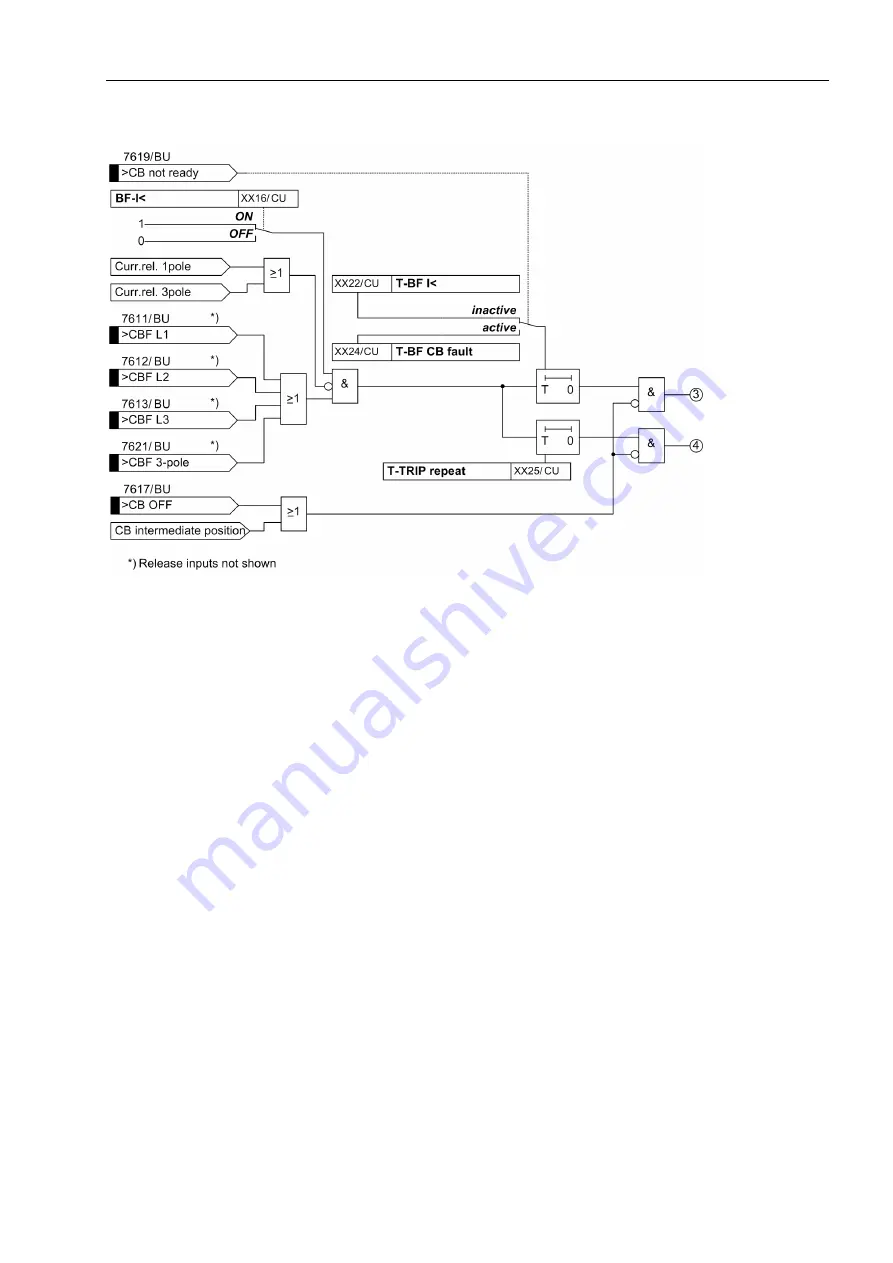
Circuit Breaker Failure Protection
125
7SS52 V4 Manual
C53000-G1176-C182-3
Figure 5-24 Low-current mode
Pulse mode
In the operating mode ”Pulse mode”, the circuit breaker failure protection is initiated
by the opposite end of the line. It operates independently of the CBF function proper
if the binary input "
>CBF puls
" (
FNo. 7614/BU
) is allocated accordingly. The ”pulse
mode” only operates with the following modes:
•
TRIP repetition/Unbalancing
•
TRIP repetition/I
>
query:
The pulse mode is reserved for special applications. This operating mode may be
used if initiation of the CBF cannot be given by the corresponding feeder protection
(e.g. delayed fault recognition; feeder protection inoperative). In these specific cases
the CBF can be initiated by the protection at the remote end via a binary input
"
>CBF puls
" (
FNo. 7614/BU
) of the bay unit.
The devices for transmission provide a signal (pulse) of variable duration. The mini-
mum signal duration of the binary input at the bay unit has to be
20 ms, the maximum
is 15 s. If the time monitoring of the impulse binary signal of the breaker failure protec-
tion picks up, the following alarm “
BFBIImpErr $00
” (
FNo. 176.1104.xx
) and the
general fault alarm “
BF ImpBI errorM
” (
FNo. 10437
) is issued by the central unit.
As soon as the delay time set with the parameter
T-BF IMP
(
XX23A/CU
) has elapsed
and a current release signal (single or three-pole) is available, a feeder-selective,
three-pole TRIP command is issued. If the TRIP command does not result in clearing
the protection function, the second stage is started after a delay time has elapsed and
if the current criteria are met.
Continuation for (3) and (4) see
www
. ElectricalPartManuals
. com

